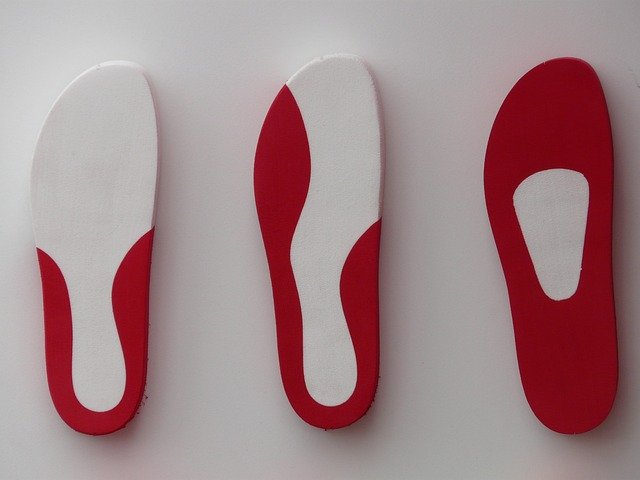Orthopedic Shoes: Supportive Footwear for Foot and Knee Health
Orthopedic shoes are designed to provide structural support, reduce discomfort, and improve the way the foot functions during standing and walking. Many people consider orthopedic options when dealing with chronic foot pain, structural differences, or recovery from injury. This article explains how orthopedic footwear works, what features matter, and how these shoes can affect feet and knee mechanics.

This article is for informational purposes only and should not be considered medical advice. Please consult a qualified healthcare professional for personalized guidance and treatment.
What are orthopedic shoes?
Orthopedic shoes are footwear built with features that promote proper foot alignment and reduce pressure on sensitive areas. Typical characteristics include a roomy toe box, stable heel counters, contoured insoles, and removable footbeds that accept custom orthotics. Unlike fashion-focused shoes, orthopedic designs prioritize function: distributing weight more evenly, limiting harmful motion, and accommodating conditions such as bunions, hammertoes, or plantar fasciitis. Manufacturers range from medical suppliers to mainstream brands offering supportive lines.
Many orthopedic shoes are prescribed by podiatrists or recommended by physical therapists when standard shoes fail to relieve symptoms. They may be off-the-shelf models with supportive insoles or custom-made pairs tailored to a person’s foot shape and gait. Understanding the level of support needed starts with a professional assessment, which helps determine whether over-the-counter orthopedic shoes or customized solutions are more appropriate.
How shoes influence foot alignment
Everyday shoes affect foot alignment by controlling motion and distributing forces during gait. Shoes with poor arch support or excessive cushioning can allow overpronation (inward rolling) or supination (outward rolling), which may strain foot muscles and ligaments. Conversely, shoes designed for stability limit excessive motion and maintain a neutral alignment, helping the foot operate more efficiently.
When shoes support correct alignment, they can reduce localized pressure and friction that contribute to blisters, corns, or calluses. For people with structural differences—such as flat feet or high arches—appropriate shoe choices can reduce compensatory muscle activity and improve comfort during walking or standing. Properly fitting shoes also reduce shear forces that may otherwise exacerbate existing foot problems.
How orthopedic shoes help feet conditions
Orthopedic shoes address many common foot conditions by modifying load, reducing pain, and accommodating deformities. For plantar fasciitis, for example, supportive arches and cushioned heel cups help control strain on the fascia. For bunions or hammertoes, a wide toe box reduces pressure on deformities and prevents rubbing that can lead to inflammation.
Feet that have reduced sensation, as in diabetic neuropathy, benefit from seamless interiors and protective outsoles that minimize injury risk. Many orthopedic options also include removable insoles so custom orthotics can be inserted for individualized correction. While shoes alone may not cure structural issues, when combined with exercises, orthotics, or medical treatment they often form an important part of a management plan.
Impact on knee and overall mobility
Foot mechanics have a direct link to knee alignment because the tibia and femur respond to how the foot strikes and rolls. Excessive pronation, for example, can increase internal rotation of the tibia and place additional stress on the knee joint. By improving foot position and controlling motion, orthopedic shoes can reduce undue knee loading and support more efficient movement patterns.
For people with knee pain related to poor foot mechanics, supportive shoes or orthotic inserts may reduce symptoms and enhance stability during activities. However, individual responses vary: what alleviates knee strain for one person might be insufficient for another. A gait analysis or assessment by a clinician can clarify whether footwear changes are a suitable strategy for knee symptom management.
Choosing orthopedic shoes in your area
When selecting orthopedic shoes in your area, start with a professional fit and assessment. Local services such as podiatry clinics, orthotic labs, and medical supply stores can offer gait evaluation and sizing guidance. Prioritize shoes that match your daily activities—work, walking, or sport—and check for features like a firm heel counter, supportive midsole, and adequate toe room.
Try shoes later in the day when feet are slightly swollen, and wear the socks you typically use. If you need custom orthotics, confirm whether the shoe has a removable insole and sufficient depth to accommodate inserts. Many vendors provide trial periods or return policies—ask about those policies so you can test comfort during real use. Keep in mind that break-in periods can be necessary, and moderate discomfort during initial wear differs from sharp or persistent pain that may signal the wrong fit.
Conclusion
Orthopedic shoes are a practical option for people seeking improved foot comfort, better alignment, and potentially reduced knee strain. Key features to look for include supportive arches, a stable heel, and adequate room for toes or orthotics. Because individual needs vary, assessment by a healthcare professional can guide the right level of support and whether custom solutions are required. Properly chosen orthopedic footwear often plays a helpful role within a broader treatment or prevention plan.






